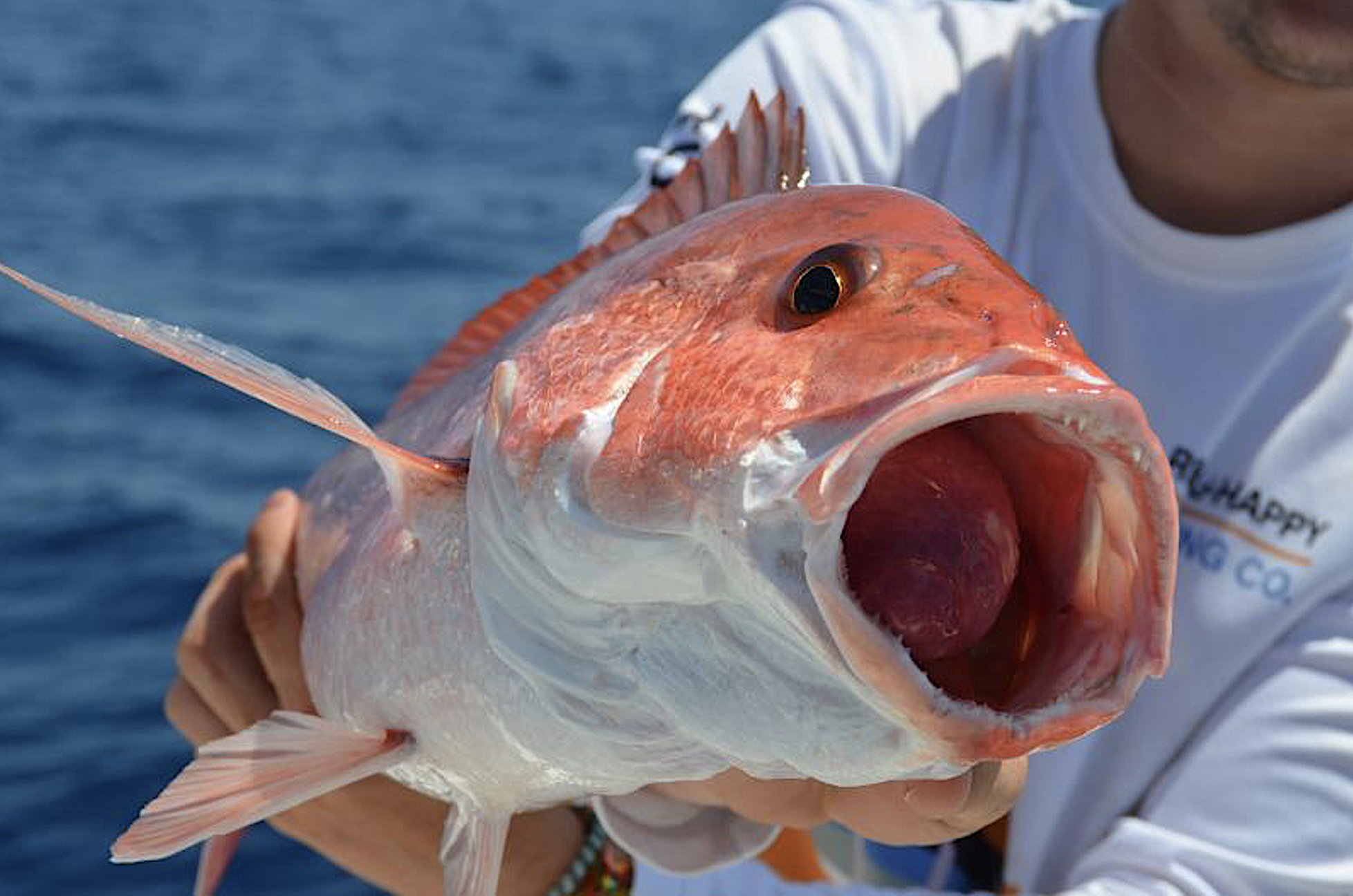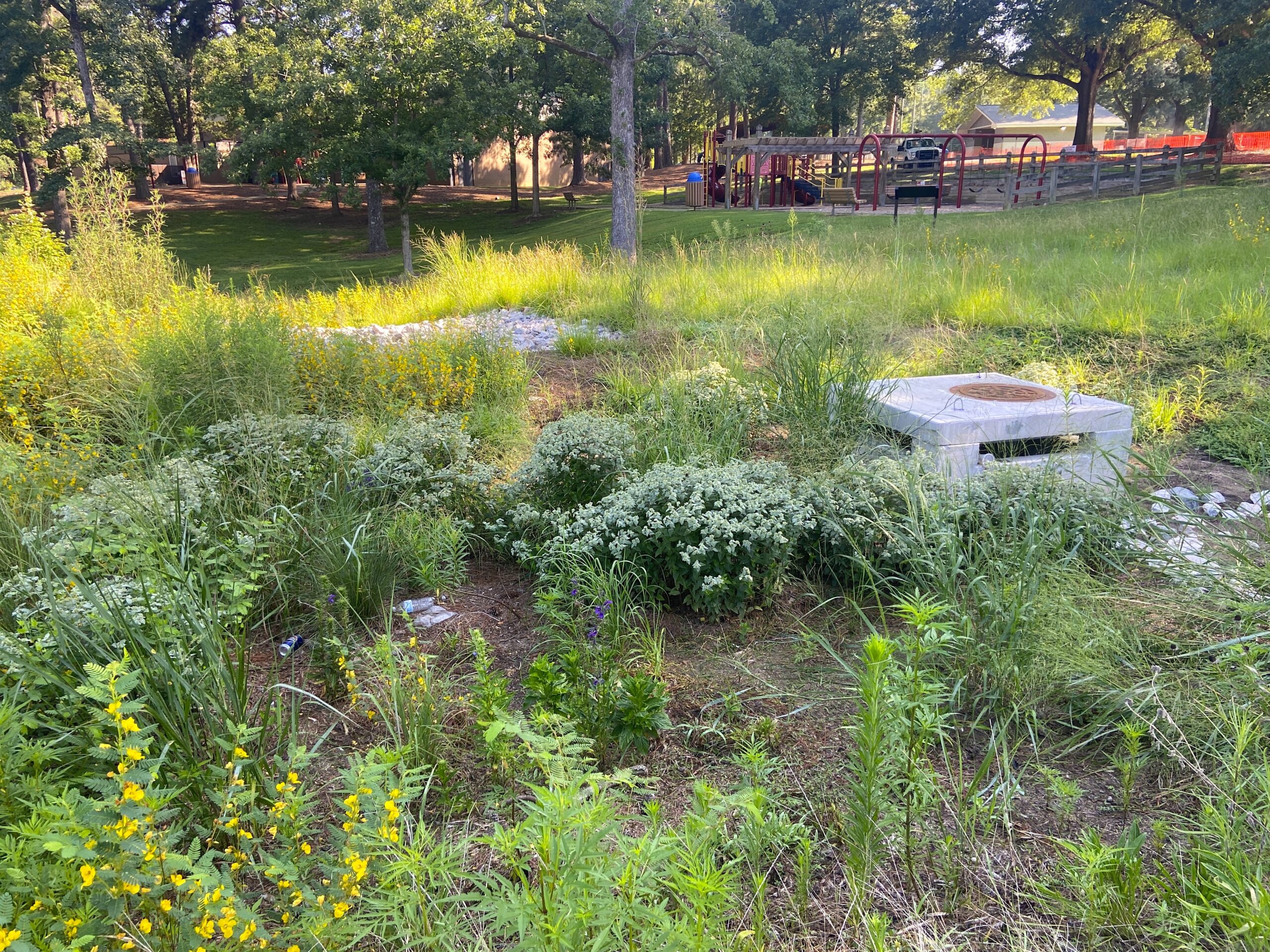Currents
News and Research
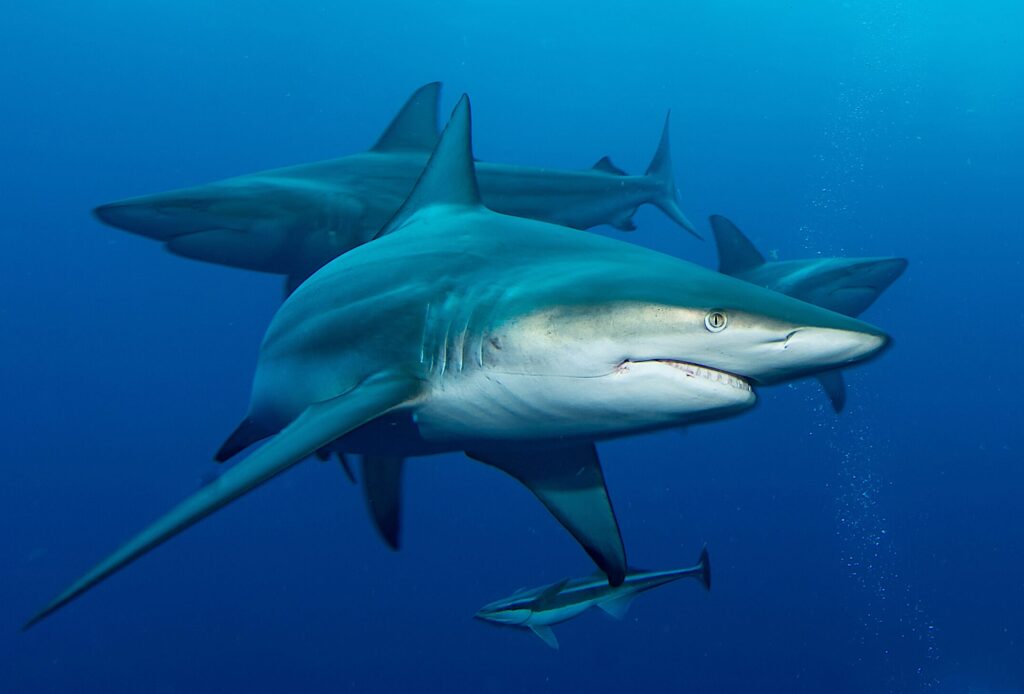
CCRG Teams Launch New Projects on Sharks, Crabs, HABs, and Resilience
Four new projects from the Community Collaborative Research Grant Program are coupling scientific expertise with local knowledge. This year’s CCRG recipients include researchers and community members working together to address shark depredation, blue crab aquaculture, harmful algal blooms, and resilience education.
• DNA Detectives: Working with Local Charter Fishermen to Understand Shark Depredation Events in North Carolina
Scientific lead: Joel Fodrie, University of North Carolina at Chapel Hill
Scientific co-lead: Chelsea Black, University of North Carolina at Chapel Hill
Local knowledge expert: Anthony Procida, Grassy Sound Charters
This project will identify shark species involved in depredation — when predators steal fish from a catch before fishers land it. The collaboration will generate data about depredation events across the three major Cape regions in North Carolina that impact the charter fishing community, and it will be the first study to use DNA techniques to identify shark species involved in depredation in our state.
• Utilizing Advanced Technology for Automated Plankton Sampling and Counting in Hatcheries
Scientific co-lead: David Cerino, Carteret Community College
Local knowledge expert: Samuel Thomas, Thomas Seafood
This project will enhance the efficiency and accuracy of plankton monitoring and sampling within the blue crab hatchery system at Thomas Seafood. The team will address current bottlenecks in data collection and improve the overall management of plankton cultures, which serve as a vital food source for blue crab larvae.
• Community-led Validation of a Remote Sensing and Deep Learning Approach to Identify Cyanobacteria Harmful Algal Blooms and Toxins in the Chowan River and Tributaries of the Albemarle Sound
Scientific co-lead: Lisa Satterwhite, Duke University
Local knowledge expert: Colleen Karl, Chowan Edenton Environmental Group
CyanoHABs (a type of harmful algal bloom) are an increasing environmental health concern, with documented negative impacts for people and animals. Using comprehensive water analysis and satellite remote sensing, this project will support real-time public health advisories to limit community exposure.
• Supporting Community-Driven Resilience Education and Research
Scientific lead: Kathryn Stevenson, NC State University
Local knowledge experts: teachers
This collaboration aims to support ecological, psychological, and community resilience through public schools, amplifying Sea Grant’s “Ready, Set, Resilience” partnership with Duke Marine Lab’s Community Science Program. It draws on the wisdom of middle school teachers — experts in educational techniques and experienced front-line responders to student needs.
North Carolina Sea Grant and the NC Water Resources Research Institute administer the CCRG Program in partnership with the William R. Kenan Jr. Institute for Engineering, Technology and Science.
— Margaret Wack
• Community Collaborative Research Grants
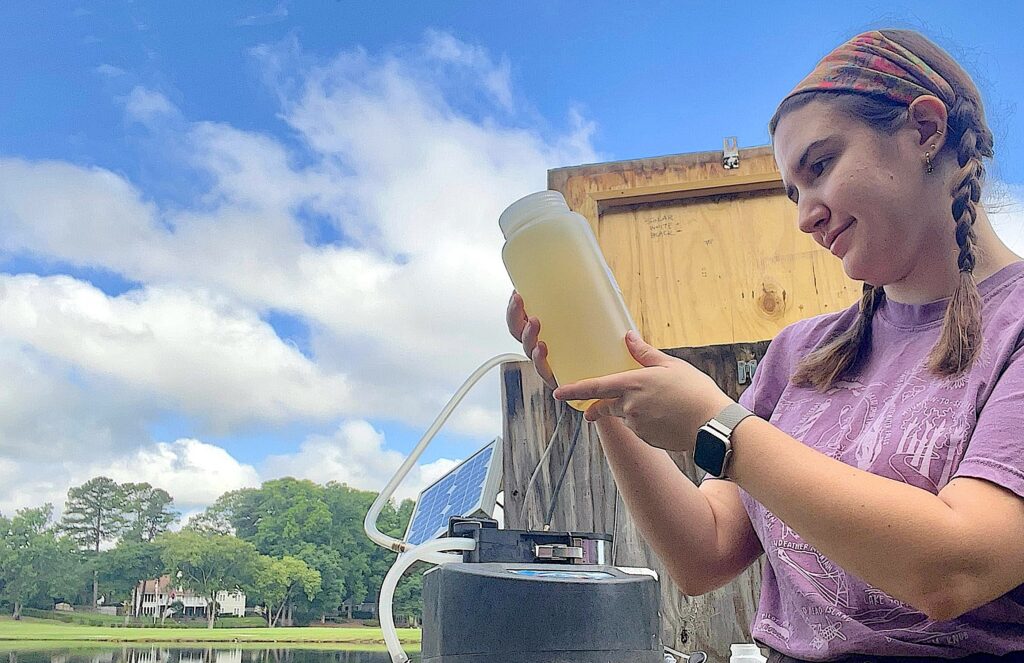
Stormwater Ponds Get Real-Time Tech
Savannah Roth, the new joint research fellow with North Carolina Sea Grant and NC Space Grant, will use a cutting-edge approach to manage flooding and water quality. Roth, a Ph.D. student at NC State University in biological and agricultural engineering, plans to improve the performance of stormwater ponds through real-time control technology.
“This fellowship is a fantastic opportunity for students to utilize tools and data sets from NASA and NOAA or that are commercially available,” says Sandy Canfield, assistant director of NC Space Grant. Canfield says Sea-Space Fellows can incorporate remote-sensing data resources in their projects.
“I’m excited to learn more about integrating remote-sensing and weather data into operational decision-making,” says Roth.
Roth says real-time control technology (RTC) provides municipal managers with data-driven decision-making tools that automate stormwater pond performance. Municipalities can build and operate RTC systems at a fraction of the cost of commercial products, she adds, making them more accessible to communities with fewer resources.
“This project will pilot-test a process that can be retroactively applied in many different locations,” says Aman Kohli, research and program coordinator for NC Sea Grant. “The transferability potential for this work is huge.”
— Carrie Clower
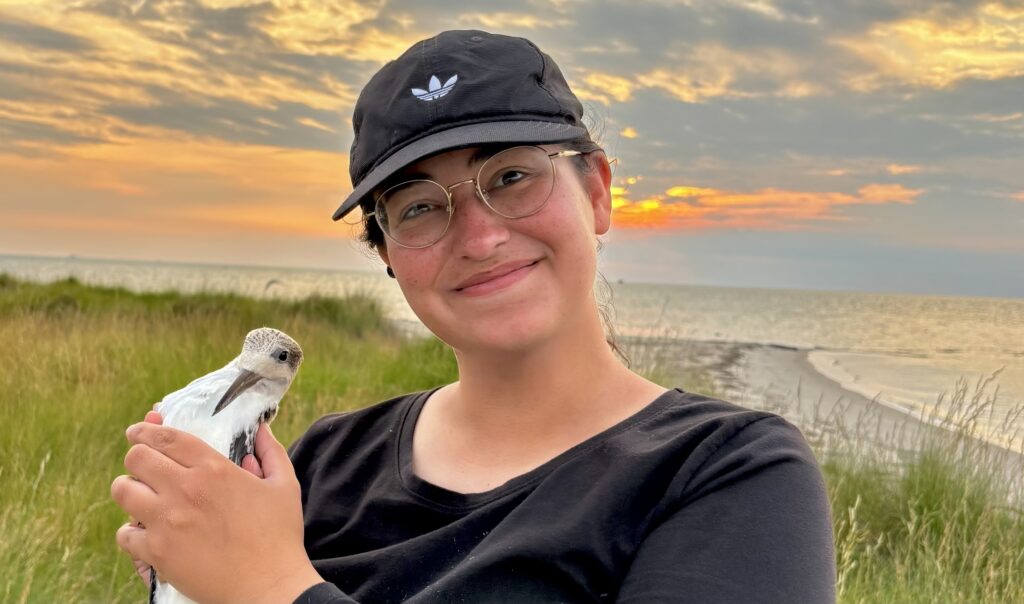
Hook, Line & Science Nets a New Fellow
Duke University’s Mason Ibrahim has begun her year-long Hook, Line & Science Communication Fellowship, summarizing recent ocean and fisheries science in lay-friendly stories for North Carolina Sea Grant’s award-winning Hook, Line & Science series.
“I’m especially passionate about helping inform the local community, not only by sharing the information they’re seeking, but also by introducing science deeply connected to their livelihood or craft,” Ibrahim says.
North Carolina Sea Grant fisheries specialists Scott Baker and Sara Mirabilio co-curate the Hook, Line & Science series, which has provided over 300 stories on topics of interest to fishing enthusiasts and others since 2018. Along the way, Hook, Line & Science won a national APEX Grand Award for Publication Excellence.
Ibrahim received a Marine Science and Conservation Scholarship in 2023 from Duke’s Nicholas School of the Environment.
“Excellent communication skills are vital to a successful science career,” says Mirabilio. “When research findings are communicated concisely and simply, it can build support for research, influence behavior, and support informed decision-making at the individual, community, and governmental levels to help solve societal issues.”
Communication skills should be required training for every scientist, Baker adds. “And this fellowship provides ample practical writing experience.”
— Ruthie Froning

Oyster Photo Exhibit Travels the Coast
North Carolina Sea Grant and the NC Oyster Trail have teamed up on a traveling photo exhibit. Photos celebrate the ecological, cultural, and economic importance of oysters and the people who help sustain this vital coastal resource. To bring the exhibit to your community, fill out this short form.
“The exhibit connects people to the coastal heritage of North Carolina, while raising awareness about the role oysters play in healthy ecosystems and resilient communities,” says Jane Harrison, coordinator for the NC Oyster Trail and coastal economics specialist for North Carolina Sea Grant.
The exhibit includes seven 3-by-3-foot displays, each highlighting a different aspect of North Carolina’s oyster story, from restoring coastal ecosystems to supporting local businesses. Beautiful and informative panels feature farmers, scientists, harvesters, and entrepreneurs who are helping oysters thrive in our state.
“The best part about oyster farming is being out on the water,” says Ryan Bethea, oyster farmer and owner of Oysters Carolina. “And oysters are delicious.”
The exhibit is designed for museums, aquariums, libraries, classrooms, visitor centers, and other venues, with options to wall-mount displays with pushpins or on metal stands.
For more information, email Jane Harrison at jane_harrison@ncsu.edu.
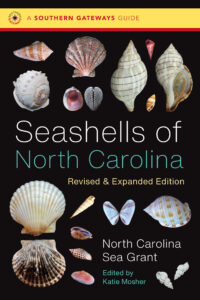
Shell Show Celebrates Seashells of North Carolina
The team behind the latest edition of Seashells of North Carolina held a book signing in May at the North Carolina Shell Show in Morehead City.
For decades, beachcombers and malacologists alike had turned to Hugh Porter’s classic guide to identify and learn about shells sprinkled along the Carolina coastline. The latest Seashells edition builds on Porter’s work. New illustrations by Georgia Minnich help identify shell shapes, leading beachcombers to descriptions and photos for final identification.
“I think this edition is concise enough for the casual beachcomber and specific enough for research purposes,” says Erika Young, coastal and marine education specialist at North Carolina Sea Grant. “My most pivotal learning experience about NC’s shells was Dr. Hugh Porter’s display at the Institute of Marine Science as a graduate student. It was an honor to work on this book and continue his legacy for mollusk lovers everywhere.”
Former North Carolina Sea Grant communication director, Katie Mosher, served as editor for the new edition, which arose out of a partnership with The University of North Carolina Press, the North Carolina Museum of Natural Sciences, and the North Carolina Shell Club.

Mariely Vega Gómez, Kamya Bates, and Katherine Elizabeth Hollinger Beatty.
NC STEM Policy Fellows Begin Service
Six NC STEM Policy Fellows are beginning year-long roles in high-level state government offices. The fellowships provide in-state career opportunities for recent graduate students in science, technology, engineering, and math.
“This cohort represents a strong group of emerging leaders, ready to bring their STEM expertise to the policymaking process,” says Aman Kohli, research and program coordinator for North Carolina Sea Grant.
North Carolina Sea Grant administers the STEM Policy Fellowship Program, now in its sixth year, with a generous matching grant from the Burroughs Wellcome Fund and support from some of the host offices.
“These fellowships provide a vital bridge between science and policy within state government,” says North Carolina Sea Grant deputy director John Fear. “We’re especially excited to welcome another new host office this year — the Albemarle-Pamlico National Estuary Partnership.”
• Mariely Vega Gómez holds a Ph.D. in biology from NC State University. She will work with the State Energy Office within the Department of Environmental Quality.
“I look forward to gaining insights into how scientific findings are translated into policy to create real-world impact,” she says.
• Katherine Elizabeth Hollinger Beatty holds a Ph.D. in atmospheric science from NC State and will work with the NC Department of Transportation.
“Through the NC STEM Policy Fellowship, I hope to strengthen my ability to translate scientific research into practical policy solutions,” she says.
• Kamya Bates holds a master’s in earth and marine sciences from the University of North Carolina at Chapel Hill. She will work with the State Energy Office.
“I look forward to the opportunity to learn more about energy efficiency within North Carolina and how to best serve North Carolina citizens,” says Bates.
• Riley Ragain holds a master’s in coastal and ocean policy from the University of North Carolina Wilmington and will work with the Albemarle-Pamlico National Estuary Partnership.
“I look forward to gaining real-world experience in policy beyond the academic setting,” says Ragain.
• Hillary Dimig, a Ph.D. candidate in nanoscience at University of North Carolina at Greensboro, will work with the NC Biotechnology Center.
“I’m excited to work with an organization with influence on economic development, education, health, and more for the people of this state,” says Dimig.
• Natalie Schulte holds a Ph.D. in chemistry from Duke University and will work with the NC Department of Commerce Office of Science, Technology, and Innovation.
“I want to gain greater expertise in communicating about North Carolina’s science initiatives to a wider audience to promote the importance of science in our economy,” says Schulte.
— Ruthie Froning
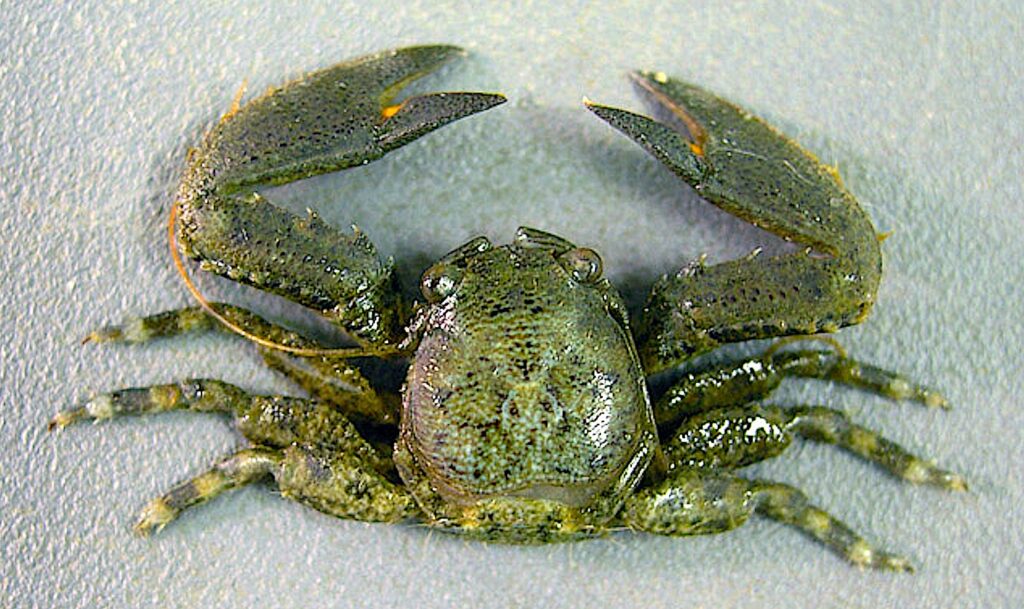
New Projects Investigate Runoff, Radon, Algal Blooms, and More
Seven graduate students are leading new studies that address key issues across the state. North Carolina Sea Grant and the North Carolina Water Resources Research Institute have selected six new joint Mountains to Sea Graduate Research Fellows, and the Stormwater Consortium is supporting the seventh.
• Ella Moore, NC State University
Importance of Landfill Leachate as a Source of Biologically Available Nitrogen to North Carolina Coastal Waters
This project uses a fluorescence model to determine how much leachate from landfills — a source of concern for coastal water quality — is present in tributary streams to the Neuse and Tar-Pamlico estuaries.
• Glory Kidimbu, East Carolina University
Invasive Species and Precipitation Shifts Influence Disease Dynamics in Aquatic Ecosystems
How are emerging biological contaminants and other environmental pressures shaping diseases and the risks of transmission in aquatic systems?
• Kaylee Luchansky, UNC Wilmington
Biomanipulation of Zooplankton to Reduce Eutrophication in B. Everett Jordan Lake, North Carolina
This study looks at uses of zooplankton to control algae and then will apply potential solutions in natural conditions at Jordan Lake.
• Mason Hale, NC State University
Time Series Radon-in-Water: An Eastern Wake County Well Water Study
The radioactive gas radon — with its associated health risks, including lung and stomach cancer — requires a detailed study of its presence in private wells.
• Mic Schulte, East Carolina University
Expanding Coastal Invasion Frontiers: Examining the Impacts of Oyster Reef Restoration on the Success of Invasive Green Porcelain Crabs
This project investigates the impacts of living shoreline design on “Caribbean creep” — the northward expansion of tropical and subtropical species — by focusing primarily on the green porcelain crab.
• Samantha Bell, UNC Chapel Hill
Determination of Secondary Organic Aerosol Formation from Cyanobacterial Harmful Algal Blooms
The frequency and intensity of cyanobacterial harmful algal blooms has increased in all 50 states, as well as around the globe, and understanding the health risks of exposure through inhalation is essential.
In addition, the Stormwater Consortium is supporting Jaime Cardenas at Wake Forest University for his study of the use of special fabrics to reduce excess nutrients and microorganisms in stormwater runoff at High Rock Lake in North Carolina.
Mountains to Sea Fellowships are open to all full-time graduate students in North Carolina’s colleges and universities in the fields of social science, education, communication, natural science, engineering, economics, or policy. Fellows conduct their research under the guidance of a faculty advisor.
— Margaret Wack
• Mountains to Sea Fellowships
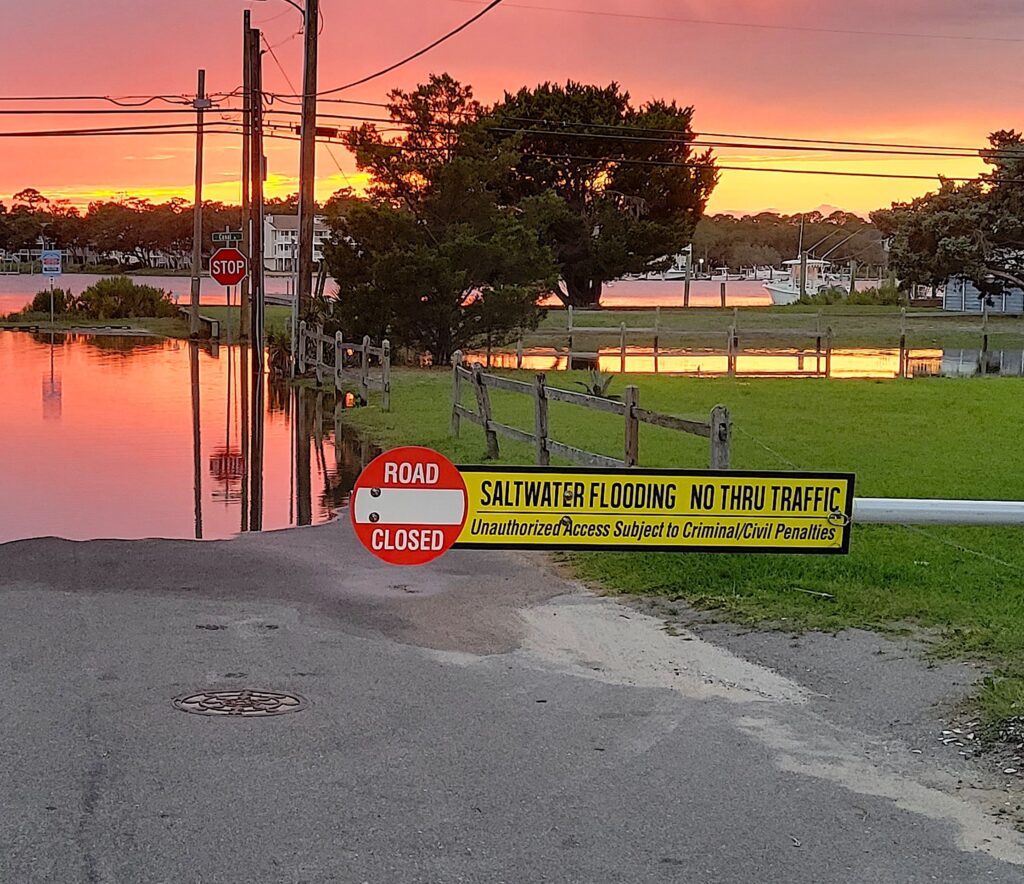
Land-Based Sensors Offer a New Look at Coastal Flooding
North Carolina Sea Grant researcher Katherine Anarde and her team are studying flooding in three NC communities — Beaufort, Sea Level, and Carolina Beach — by using a network of land-based sensors. The research offers a new picture of coastal flooding.
Communications Earth and Environment published their study, which the Washington Post and The News & Observer covered.
Partially funded by an NC Sea Grant Core Research Funding Grant, the research provides “new estimates of flood frequency” by installing an open-source network of sensors in stormwater drains and adjacent roadways. The study then compares data to tide-gauges that record the height of rising and falling tides, as well as other parameters such as wind speed and direction and temperature.
The team has found a mismatch between the number of flood events and measurements from tide-gauges. In short, coastal communities flood more often than the number of “high-tide flooding days” that NOAA tide-gauges project.
Given the research team’s findings, land-based sensors offer an additional tool for measuring a range of flooding events. “Improving the accuracy of coastal flood measures is critical for identifying the impacts of sea-level rise and developing effective adaptation strategies,” the team wrote.
— Rebecca Jones

Can Oyster Farming Stabilize Shorelines?
Sam Holberg, the new North Carolina Coastal Research Fellow, is studying floating oyster aquaculture and how it may influence shoreline change by lessening wave energy. Holberg plans to work with participating oyster lease holders adjacent to Permuda Island Reserve.
“I am especially looking forward to engaging with stakeholders, whether it be from Sea Grant, the Reserve, or the local oyster farming community,” says Holberg, a doctoral student in biological and agricultural engineering at NC State University. “I am excited to learn from their perspectives and translate this research into actionable solutions that will hopefully make a difference.”
Traditional shoreline stabilization methods are costly and potentially disruptive, and Holberg’s results may suggest areas to expand farming that would also stabilize coastline.
“This research project holds significant promise for informing coastal engineering approaches,” says Justin Ridge, research coordinator for the N.C. Coastal Reserve and National Estuarine Research Reserve. “We value the opportunity to generate new insights at a location that has historically received less scientific attention.”
Holberg will share his findings with oyster growers throughout the state.
North Carolina Sea Grant and the N.C. Coastal Reserve and National Estuarine Research Reserve jointly fund the fellowship.
— Carrie Clower
